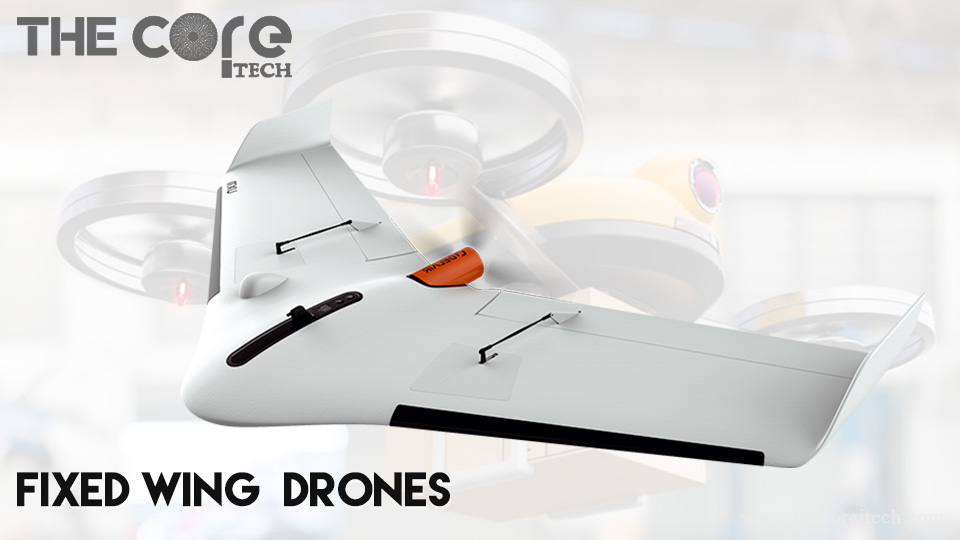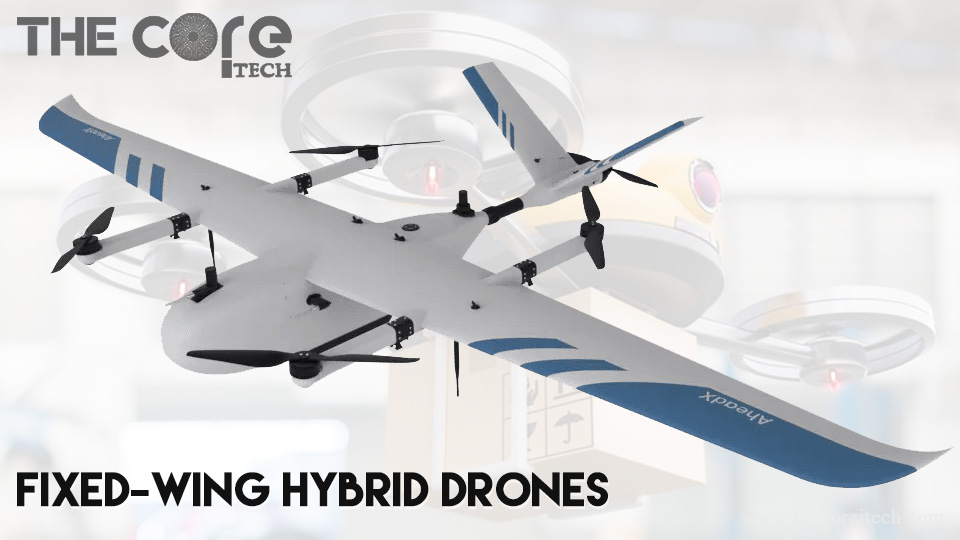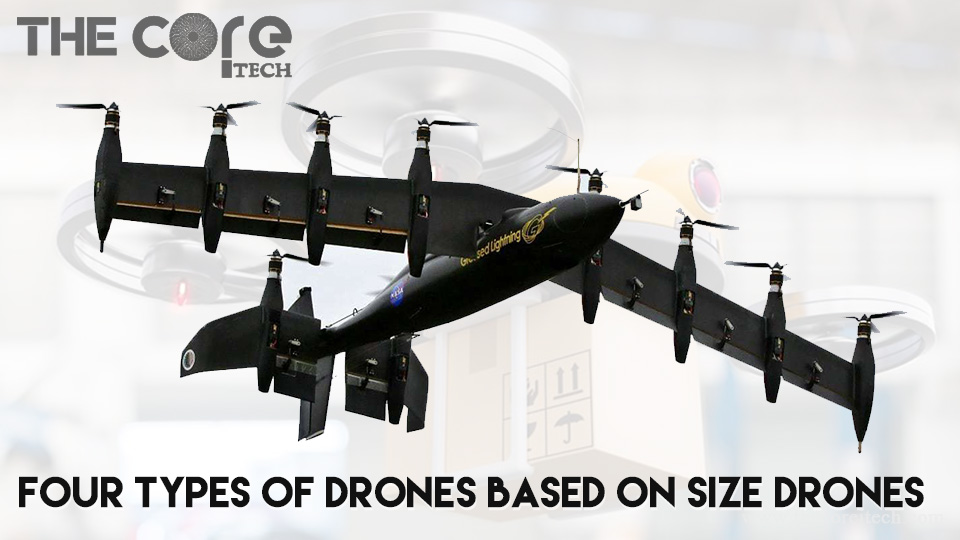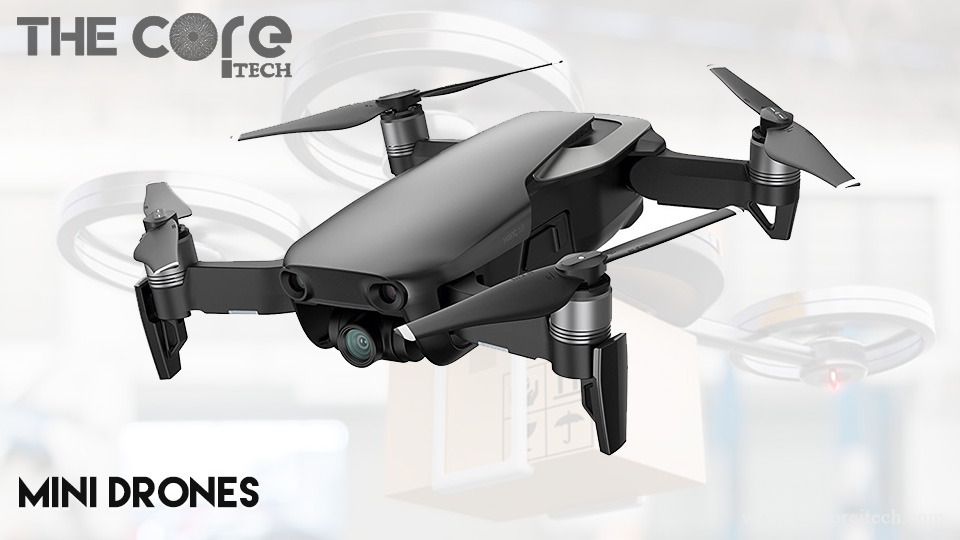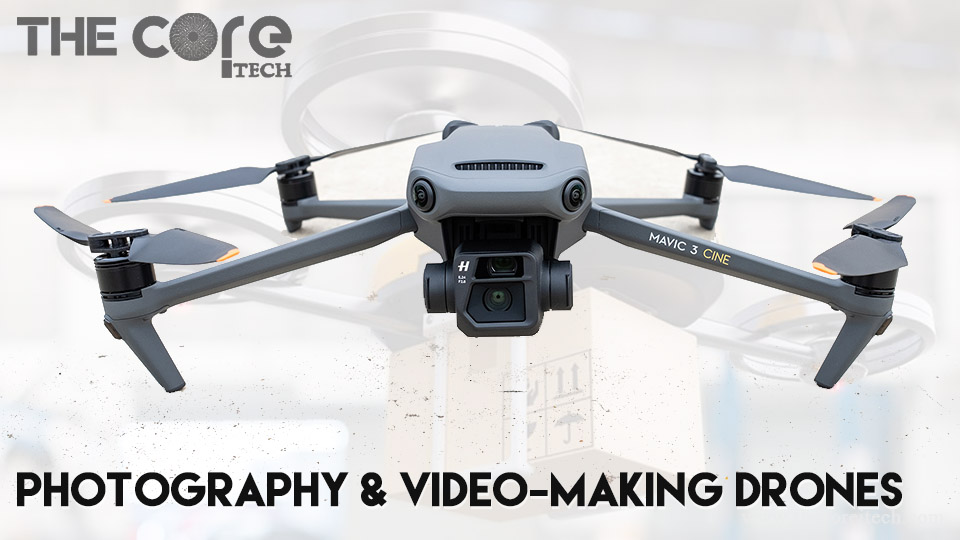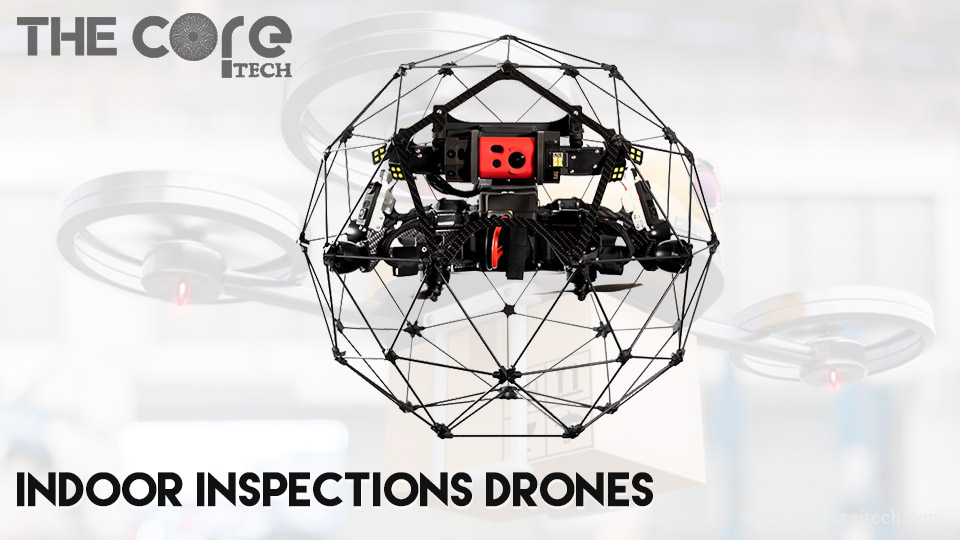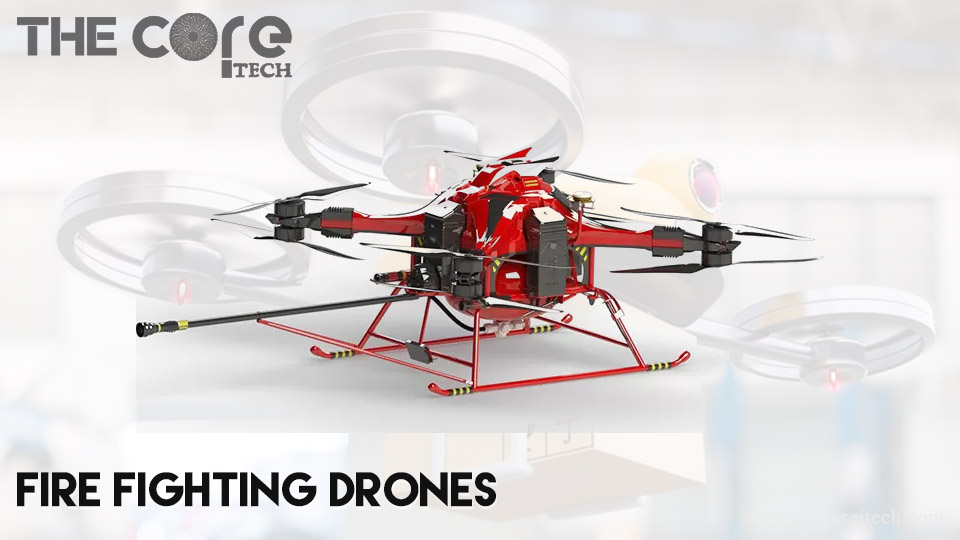How many types of drones are there? – Explore the UAV’s
In the exciting world of technology, drones have become incredibly popular and useful. These unmanned aerial vehicles (UAVs) are everywhere, changing industries and capturing the attention of hobbyists around the globe.
Have you ever wondered how many types of drones are out there?
Well, get ready for an eye-opening adventure as we explore the amazing realm of UAVs.
Recent stats from the aerocorner blog reveal that drone registrations have shot up in recent years, hitting a staggering 1.7 million in the United States alone. This rapid growth shows just how versatile and capable these flying wonders have become.
Drones are now doing everything from taking stunning aerial photos and videos to assisting in search and rescue missions. They’re proving their worth in countless applications.
As we dive into the diverse world of drones, we’ll uncover the various types, each with its unique design, purpose, and functionality. Whether you’re interested in the nimble movements of multirotor drones like quadcopters, the efficiency of fixed-wing drones, or the flying prowess of single-rotor helicopters, this journey will give you a thorough understanding of the many UAVs available.
So, buckle up and get ready for takeoff as we embark on an exhilarating journey to explore the countless types of drones soaring through the skies.
Get ready to expand your knowledge and discover the incredible capabilities that are propelling us into a new era of innovation and endless possibilities.
What is a Drone?
Before we dive deep into the world of drones, we need to grasp the concept of this device first. We need to understand what a drone is.
By definition, drone refers to a robotic and unpiloted aircraft or spacecraft. More formally, it gets recognized as UAVs, which stands for Unmanned Aerial Vehicles. These also get recognized as UASes, which stands for Unmanned Aircraft Systems. What motivated their creation was the need for a machine to carry out certain tasks elsewhere, without having to risk the life of a pilot. However, one can control the device by remote or programmed software.
Although initially, the use of a drone wasn’t at all noble and good, their uses today are both vast and goodness-oriented. The uses range from carrying out package deliveries to assisting in military missions.
Classifications of Drones
As mentioned earlier, several different platforms classify drones differently. Everyone views the drone from their unique eye and brings out a different category.
Although it is an approach that appears admirably creative and inventive, we believe it is creating great trouble for those who are new to the concept of a drone.
Due to several diverging says on the subject, i.e., types of drones, many novice learners are unable to get the classifications straight in their heads. And that is exactly what motivated us to formulate this post!
Today, let us inform you that there are only four primary types of drones. And these are as follows:
- Purpose
- Built
- Size
- Practical Applications
Below, you can explore the fundamentals of each division and its further sub-divisions.
Two Types of Drones Based on Purpose
Perhaps, the very first and important classification of drones is according to the intent of use. Mostly because why would someone want to know about a drone, use one, or purchase one? Surely, one ought to have a purpose unless you have a geeky brain.
So, let’s have a look at possible purposes in the present times.
Professional
Professional uses of drones also get termed as commercial uses. Either way, the terms refer to the high-tech drones that aid in carrying out military or state-related tasks. Or assist some individuals in earning money.
For example, some drones assist real estates in capturing aerial shots of a building. Or some with thermal cameras ease HVAC inspector’s work by capturing pictures that help them figure out the route of the escape of heat.
Similarly, there are drones equipped with super-impressive cameras and even engines. These drones get used in cinematography, journalism, and sports photography. Even more, some small drones that come with radars also come into professional use as they get used by disaster management departments. The drones collect information even from the narrowest areas.
Along the same lines, there are several professional and commercial uses of drones. And they come equipped with relevant tech features so that they may execute their job proficiently.
However, most professional-use drones have a short, mid, or endurance-level range. A short-range drone can fly as high as 90 miles and stay in the air for 8-12 hours. Thus, they are suitable for surveillance or spying purposes. On the contrary, a mid-range drone can fly as high as 400 miles while the endurance-level drone can reach 3000 feet.
Recreational
Next, comes the interest-based use of the drone. Most of the recreational drones have fancier design, low-cost, and greater durability. The durability, here, is not to protect the sophisticated high-end components but to make the product more durable as interest-based drones usually get purchased by beginners. And so, these are likely to suffer falls.
However, even in the recreational department, there are several divisions. Some low-cost recreational drones get manufactured from plastic material and feature a low-megapixel camera. These classify as a drone for kids or beginners.
But with the growth of passion and your love for drones, you can upgrade your recreational drones to an intermediately sophisticated drone. In comparison to professional drones, these still cost much less (less than $250). There are selfie drones as well that come in real handy when you head out on a camping trip with family or perhaps a road trip with friends.
Four Types of Drones Based on Built
While going through a collection of drones in the market, you must have seen drones with different appearances. Some would have four rotors, whereas some would have two wings.
Well, although there is a huge variation in types of drones based on built, there are three primary categories. Each type has a different purpose and has its set of pros as well as cons. Let’s evaluate each type in detail!
Single Rotor
As the name indicates, a single rotor drone has one rotor and a tail rotor to control its direction. It resembles a helicopter, but it is smaller in size and does not require manned aviation.
The single rotor drone has longer flight durations and can get powered by a gas motor. It is available in both quadcopters and octocopters. However, quadcopters are more efficient because there goes a general rule that larger rotor blades make the spin slower and attains more efficiency.
If you want a drone that can handle intensive tasks well, then the single rotor is an idealistic option. However, these can be dangerous too. As the blades are bigger, they can cause fatal injuries. Also, they require more maintenance.
Multi-Rotor
The multi-rotor drone is the most popular option these days, which also makes it cheap and easily available. These drones have two or more rotors. You can a good aerial view with these drones.
However, multi-rotor drones have short flight durations and speed. Thus, you can not use them for larger aerial views or long distances.
Fixed Wing
A fixed-wing drone appears like an airplane, but much smaller. Unlike rotary wings, these drones have two fixed wings that do not move. The fixed-wing drones use energy to move forward and not to sustain them in air.
Hence, these are more efficient in covering long distances. Also, one can power these drones with gas engines. Generally, a fixed-wing drone can remain airborne for 16-hours.
Fixed-wing drones are expensive products. Also, they need experienced controllers as the aircraft moves continuously. One does not have the time to let the drone hover and sort out the controls.
Moreover, the fixed-wing drones require a platform or runway to get into the air. They do not start instantaneously hovering.
Fixed-Wing Hybrid
The fixed-wing hybrid category is relatively new and under development. You will not find many products in this range. Technically, the hybrid category focuses on merging the fixed wings drones with the ability to hover.
Four Types of Drones Based on Size
The size of a drone decides its usability. You can’t fit a large drone alongside other equipment of yours in your backpack. Neither you can use a mini drone to deliver heavy packages. For the very reason, you must first consider the purpose of your drone and then pick a size accordingly.
The following are four available of options of sizes in the present times (there may be more in the coming future!):
Nano/Micro Drones
Nano or micro drones are so small that they can fit atop of your finger! Or, more accurately, they are hardly as big as a large insect. In terms of figures, it is around 100mm to 150 mm. And due to their size, they can usually reach short distances only. Therefore, they are most suitable for indoor use for beginners.
Mini Drones
Mini drones best serve the needs of indoor or at most garden-use for both passionate kids and novice drone users. In length, these measures anywhere from 20-inches to 80-inches. Most of these models have good cameras and other functionalities but still may not be fit for professional use or for delivering packages. However, in the present times, these are exactly the ones you see people toying around with or for capturing an event.
Medium Drones
Since medium drones are heavier than mini drones and they have much more sophisticated construction, they get used for professional or commercials purposes only. These can be as heavy as 440 pounds. Thus, you may need help while handling it as well as carrying it. Also, these are the high-end ones and usually offer top-notch performance with better flight time and durability.
Large Drones
Rarely you will ever see the use of large drones unless you happen to visit the military headquarters or bases often.
These are as big as the military aircraft (imagine the size of a jet or airplane) and come into use for surveillance or spying purposes.
Five Types of Drones Based on Applications
Undeniably, drone technology has weaved itself with daily human chores. People use drones for various purposes, from photography to gathering data. Considering the increased usage, drone manufacturing companies have taken innovative steps to create application-specific drones.
These drones have a design and build to serve one particular purpose only. Hence, they tend to be efficient. Below, you will find the primary types of drones based on the application.
Photography & Video-making
Perhaps the most common purpose of a drone is to capture images and create videos from a certain height as well as angle. Companies have launched special 4K drones that have high-quality cameras and hardware.
With 4K technology, these drones provide high-resolution, detailed, and vivid images. A majority of professional photographers use 4K drones to encapsulate stunning aerial views.
Indoor Inspections
Nowadays, people are using a lot of intelligent and smart home care devices. So, it did not quite surprise us, when the drones with indoor inspection capabilities steppes into the market. These drones have a cage-like structure around them to protect them from damage as they search the entire house. You can use these indoor inspection drones for hunting specific substances and objects.
Racing
Similar to drone photography, racing has also evolved into a popular hobby and profession. People hunt for drones with fast-speed modes to compete with their fellows. However, their hunt seems to have come to a halt as drone-manufacturing companies have launched specific racing drones.
These drones have fast-speed mode and integrated build to make them travel at faster speeds. Often, racing drones do not have a camera and other features. Also, they can prove to be dangerous if someone bumps into them.
Agriculture
Imagine a drone that can travel all over your fields and detect even the minutest problems. Well, such technology can make farmer’s lives incredibly easy.
Fortunately, drone industries realize these issues and aim to make everyone’s life easier with specializing drones. Hence, there also exists an agriculture-focused drone that can identify problems in different areas of different fields. These drones also come with special applications to make the collected data readable.
Fire Fighting
Now, drones can also assist firefighters, side by side, on their rescue missions. Yes, there are firefighting drones that have special heat-resistant cameras. These drones can travel throughout fire-affected areas and capture images. Similar to agricultural drones, these also collect specific data and transfer it to the software. You can figure out the collected data easily thorough the company provided software.
Conclusion
Drones surely are some complicated gadgets. Each aspect seems to give it a new identity. But to make the best decisions and keep ourselves clear and well-informed, we must only distinguish these on the criteria mentioned above. That’s because, as bigger domains, these categories provide an umbrella to all. For those available currently and those to come, these categories will provide a room to belong for every type of drone.
Nevertheless, let’s wrap it up. Now that you know all types of drones, we hope you will wisely select one for yourself. Or if you’re planning to gift it to someone, we hope you select the one that best matches the requirements.
Don't miss our article on Best Wireless Display Adapter Review
Frequently Asked Questions (FAQs)
Discover concise answers to common questions in our FAQ section. Get quick and valuable insights on various topics with ease.
What is a drone?
A drone, also known as an unmanned aerial vehicle (UAV), is an aircraft that operates without a human pilot onboard. It is typically controlled remotely or autonomously.
What are the different types of drones?
There are several types of drones, including multirotor drones (such as quadcopters, hexacopters, and octocopters), fixed-wing drones, and single-rotor helicopters. Each type has its own design, capabilities, and purposes.
How do drones work?
Drones work by utilizing a combination of flight control systems, sensors, and propulsion systems. They are operated through remote control or autonomous flight software that allows them to navigate and perform various tasks.
Do I need a license to fly a drone?
The requirement for a drone license varies depending on the country and the purpose of drone usage. In some cases, recreational drone users may not need a license, but commercial drone operators often require certification or a license from aviation authorities.
What are the regulations for flying drones?
Regulations for flying drones differ by country, so it’s important to check the specific rules and guidelines in your area. Typically, regulations cover aspects such as flight altitude limits, restricted airspace, privacy considerations, and operating guidelines for recreational and commercial use.
What are the advantages of using drones?
Drones offer numerous advantages, including aerial photography and videography capabilities, efficient data collection, cost-effective surveying and mapping, improved safety in hazardous environments, and faster delivery options, among others.
What are the popular applications of drones?
Drones have a wide range of applications. Some popular uses include aerial photography and videography, surveillance and security, search and rescue operations, agriculture and crop monitoring, infrastructure inspections, environmental monitoring, and delivery services.
Can drones be used for aerial photography and videography?
Yes, drones are commonly used for aerial photography and videography. They provide a unique perspective and allow capturing stunning aerial shots and videos for various purposes, such as filmmaking, real estate marketing, event coverage, and more.
How long can drones fly on a single charge?
The flight time of drones varies depending on factors like drone model, battery capacity, payload weight, and flight conditions. Consumer drones typically have flight times ranging from 10 to 30 minutes, while professional drones can have longer flight times, sometimes exceeding 30 minutes.
Are drones weatherproof or waterproof?
Not all drones are weatherproof or waterproof. Some drones are designed to withstand light rain or splashes, but they are generally not fully waterproof. It’s crucial to check the specifications and capabilities of a drone before flying it in adverse weather conditions.
Can drones be flown at night?
Flying drones at night is subject to specific regulations in many countries. In some cases, drones are allowed to fly at night if they are equipped with proper lighting and follow the necessary safety protocols. However, it’s essential to check local regulations before flying a drone at night.
How high can drones fly?
The maximum allowable altitude for drones depends on the regulations of the country or region where you are flying. In many countries, recreational drones are limited to a maximum altitude of 400 feet (120 meters) above ground level. Commercial drone operators may have different altitude restrictions depending on their certification and airspace regulations.
What safety measures should I take while flying a drone?
To ensure safe drone operation, some essential safety measures include maintaining visual line of sight, avoiding crowded areas, respecting privacy, checking weather conditions, conducting pre-flight checks, and following local regulations. It’s crucial to operate drones responsibly and with consideration for both people and property.
Can drones be controlled remotely?
Yes, drones are typically controlled remotely using a ground-based controller. The controller allows the pilot to maneuver the drone, adjust its altitude, control its speed, and activate various flight modes and features.
Are there any restrictions on where drones can be flown?
Yes, there are restrictions on where drones can be flown. These restrictions commonly include avoiding sensitive areas such as airports, military bases, and government buildings. Other restricted areas may include national parks, wildlife sanctuaries, and crowded public spaces. It’s important to research and comply with local regulations to ensure safe and legal drone operation.
How much do drones typically cost?
The cost of drones varies greatly depending on factors such as brand, model, features, and capabilities. Consumer drones can range from a few hundred dollars to several thousand dollars. Professional-grade drones used for commercial applications often have higher price points, starting from a few thousand dollars and going up significantly depending on the specifications and accessories.
What features should I consider when buying a drone?
When buying a drone, important features to consider include flight time, range, camera quality, stabilization systems, GPS capabilities, obstacle avoidance, intelligent flight modes, and ease of use. Considering your specific needs and intended applications will help you choose the right drone with the features that best suit your requirements.
Can drones be used for delivery purposes?
Yes, drones can be used for delivery purposes. Companies are exploring the use of drones for package delivery, especially for short-distance and time-sensitive deliveries. However, the implementation of drone delivery services is subject to regulatory approvals and operational considerations.
How do drones avoid obstacles while flying?
Many advanced drones come equipped with obstacle avoidance systems that use various sensors such as cameras, infrared sensors, and ultrasonic sensors to detect and avoid obstacles during flight. These systems help enhance the safety and autonomy of drone operations.
Can drones be used for agricultural purposes?
Yes, drones have found extensive use in agriculture. They can be employed for tasks such as crop monitoring, irrigation management, plant health assessment, mapping, and precision spraying. Drones equipped with specialized sensors and imaging technology can provide valuable data to optimize agricultural practices and increase crop yields.






